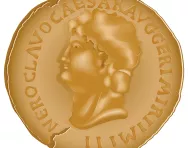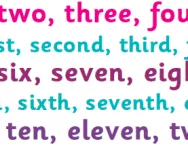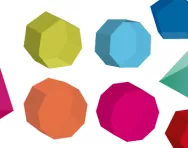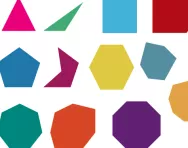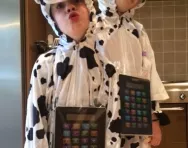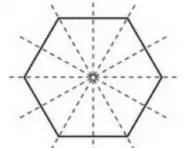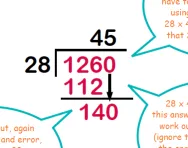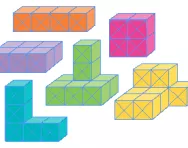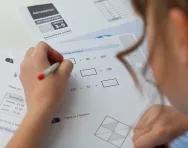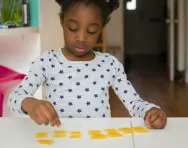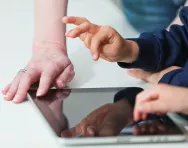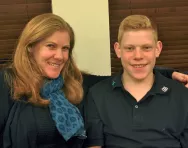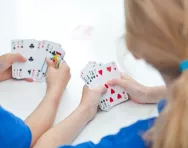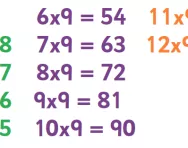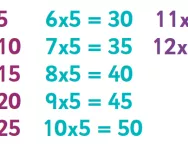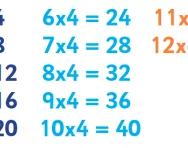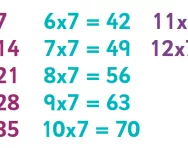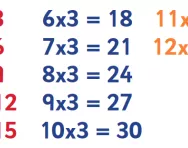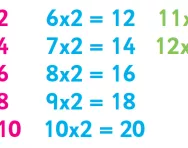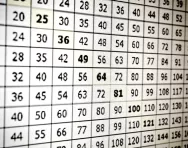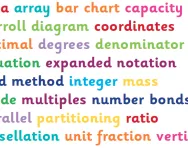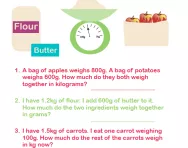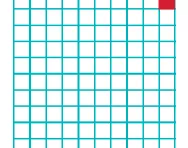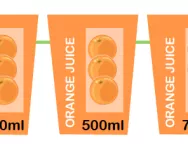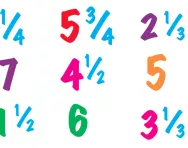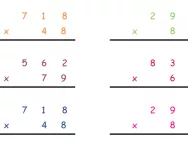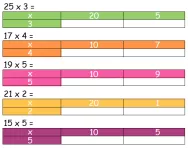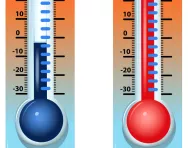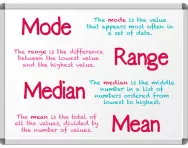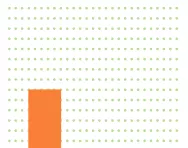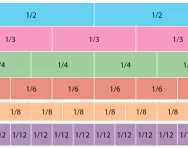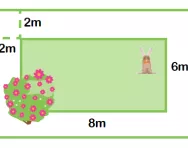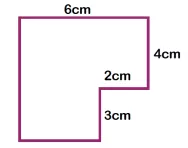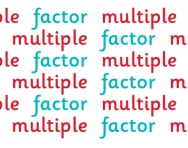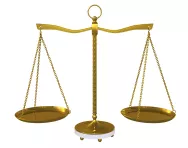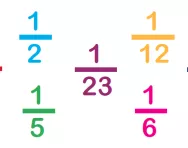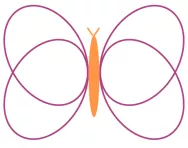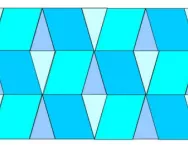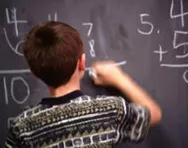Year 4 Maths articles
What are Roman numerals?
Children in KS2 are expected to read and write Roman numerals as part of the primary curriculum. We explain how Roman numerals are introduced in the classroom and how you can help your child practise reading Roman numerals at home.
What are cardinal and ordinal numbers?
Reception and KS1 children all learn cardinal and ordinal numbers. We explain how your child will be taught to count and sequence numbers correctly and suggest practical, fun activities you can try at home to support your child's early mathematical learning.
What are prisms and pyramids?
Prisms and pyramids explained for parents, including practical ways children work with 3D shapes in the classroom and learn about their properties.
What is a polygon?
Can you tell your hexagons from your heptagons? Your octagons from your decagons? With the help of educational experts, we explain how polygons are taught in primary school, with examples of regular and irregular versions of each multi-sided shape.
No-sew mathematical costumes for Maths Week
A Maths Week costume?!? Don’t get your numbers in a twist! Non-crafty mum Phoebe Doyle’s on hand with some no-sew, no-stress ideas.
What are line symmetry, reflective symmetry and rotational symmetry?
Understand the forms of symmetry your child will be taught as part of the primary-school curriculum (line symmetry, reflective symmetry and rotational symmetry) and see how the concepts are applied in the KS2 classroom.
What is long division?
Children in Year 5 and Year 6 are encouraged to use the long division method to divide larger numbers. We explain the technique and offer a step-by-step guide to using it, as well as an overview of division teaching and the division methods used in primary school.
What are number facts?
Children are expected to memorise a number of different number facts in primary school, including number bonds to 20 and the multiplication and division facts for the twelve times tables. We explain what number facts your child will be taught when and suggest easy ways to support their learning at home.
What is volume?
Volume and capacity are important concepts in primary maths, and your child will start learning about the amount of 3D space occupied by an object in Key Stage 1. Find out how you can support their learning at home, plus the relevant mathematical formulae, with our parents' guide to volume.
Changes to KS2 SATs in 2025: what parents need to know
If your child is in Y6 in 2025, read on for the most up-to-date SATs information for parents.
10 brilliant primary-school maths aids
Children often learn faster if they are allowed to use practical equipment to support them. Primary teacher Angela Smith explains what maths aids your child might find in the classroom, and how you can also use them at home to help your child practise important numeracy skills with hands-on, practical activities.
Why games-based learning is great for your child
If you despair of the amount of time your child spends attached to their tablet, think again: games and apps are an important part of their learning journey, from pre-school to secondary school, and can help to improve problem-solving skills and communication, as well as boost motivation. Lucy Dimbylow finds out why gaming means learning in the twenty-first century.
"He had problems counting up in twos, fives and even tens"
Lillian Blundell, from Bath, describes her experience of the SEN and school system with her son Robbie, 16, who has dyscalculia, and shares her tips for other parents.
10 ways playing cards helps children with maths
Fancy a quick game of cards? Studies show cognitive benefits to play and card games teach children new strategies for using mathematical information, categorising patterns, sequencing and sorting. Last but not least, this is numeracy practice the whole family will enjoy (though things might get a bit competitive... beware!). Kate Yelland asked maths teachers and experts why sitting down with a pack of cards and a primary-school child is definitely playing your cards right.
Learning the 6, 8 and 9 times table: tips and tricks
Tips and resources to help primary-school children master the 6, 8 and 9 times tables, with advice from experienced educator and teacher John Bald.
Learning the 5, 10, 11 and 12 times table: tips and tricks
Tips and tricks to help you help your child master the "easy" times tables (5, 10, 11 and 12), plus worksheets, games and activities to put the learning into practice.
Learning the 4 times table: tips and tricks
Practising the 4 times table with your child? Try educator John Bald's table-specific tips to help your child master it, then use 4 times table worksheets and games to consolidate the learning.
Learning the 7 times table: tips and tricks
The 7 times table is often the hardest to learn, but don't lose heart – educator John Bald has specific tips and a step-by-step learning plan to help you help your child master it.
Learning the 3 times table: tips and tricks
Once your child is confident with the 2 times table it's time to move on to 3s and 5s. Follow educator John Bald's advice to help you support your child with the 3 times table and find links to 3 times table worksheets and games.
Learning the 2 times table: tips and tricks
The 2 times table is the foundation of all multiplication tables learning. Follow educator John Bald's practical and very specific advice to help you support your child with the 2 times table and find links to worksheets and games to make practice fun.
Times tables: the best ways to learn
Each multiplication table has its own pattern and poses a different challenge to learners. Teacher and educational consultant John Bald offers practical strategies and ideas to help your child learn each times table and boost their confidence with multiplication.
Primary numeracy glossary for parents
From area to word problems, TheSchoolRun's primary-school numeracy glossary offers a complete guide to all the maths concepts children are taught in EYFS, KS1 and KS2. Brush up on your own mathematical skills, clear up homework confusion and understand exactly what your child is learning at school by reading our basic definitions (with links to more detailed explanations, teachers' tips and examples).
What is a word problem?
We explain what a word problem is and give examples of the types of word problems your child might be challenged with in each primary-school maths year group, from Year 1 to Year 6.
What is a percentage?
We explain what a percentage is, how children are taught to understand the concept, to find percentages of numbers and to compare fractions of amounts to percentages of amounts.
What is capacity?
We explain what capacity means and how children are taught to understand the concept in KS1 and learn about the relationship between millilitres and litres, and in KS2 use decimal notation to record the capacity of water and convert between units of measurement.
What are improper fractions and mixed numbers?
We explain what improper fractions and mixed numbers are and how the relationship between them can be taught to primary-school children.
What is long multiplication?
We explain what the long multiplication method is and review how multiplication skills are built up through each year of primary school.
What is the grid method?
We explain what the grid method is, how it is taught in primary-school maths and how it is used to multiply a two-digit number by a one-, two- or three-digit numbers, when multiplying amounts of money and when multiplying decimals.
What are negative numbers?
We explain what negative numbers are and how children can be taught the concept using a number line, as well as looking at the types of questions that children might be asked involving negative numbers.
What are mode, mean, median and range?
We explain the meaning of the terms mode, mean, median and range, with examples of how to find each of these from a set of numbers, as well as examples of the types of questions primary-school children might be asked when interpreting data sets.
What is rotation of shapes?
We explain what the term rotation means in geometry, how primary-school children are taught to rotate shapes clockwise or anticlockwise or about the centre, and how to combine rotation with coordinates.
What are equivalent fractions and simplifying fractions?
We explain what equivalent fractions are, how the concept of equivalence is introduced in primary school maths and how knowledge of equivalent fractions is then used to simplify fractions.
What is area?
We explain what the term area means and how children are taught to calculate the area of a shape.
What is the perimeter?
We explain what the perimeter is and how teachers explain the concept to children in KS2, as well as showing the types of perimeter word problems children could be faced with.
What are multiples and factors?
We explain what multiples and factors are and how children are taught to recognise multiples from Year 1 and factors from Year 5, with examples of the types of problem they might be asked to solve.
What are standard and non-standard units?
We explain what standard and non-standard units are and how non-standard units can help children understand the concept of weight before they master the skill of accurate measurement and converting units of measurement
What are unit fractions?
We explain what unit fractions are and why children need to understand the concept of unit fractions before moving onto more advanced fractions learning.
What is symmetry?
We explain what symmetry is and how primary-school children are taught to find the line of symmetry and draw lines of symmetry on different shapes.
What are tessellating shapes?
We explain what tessellating shapes are and why tessellation may be taught in primary school as part of learning about 2D shapes.
What is an estimate?
We explain how children are taught to make estimates to check whether their answers are correct and how this skill is applied to more difficult calculations as your child advances through primary school.
